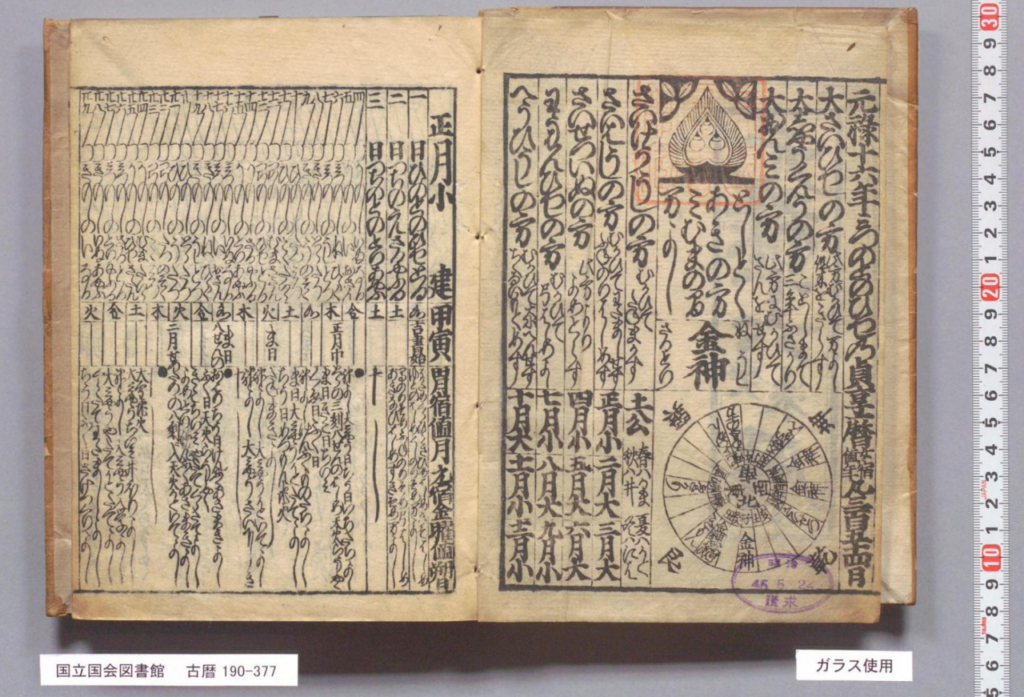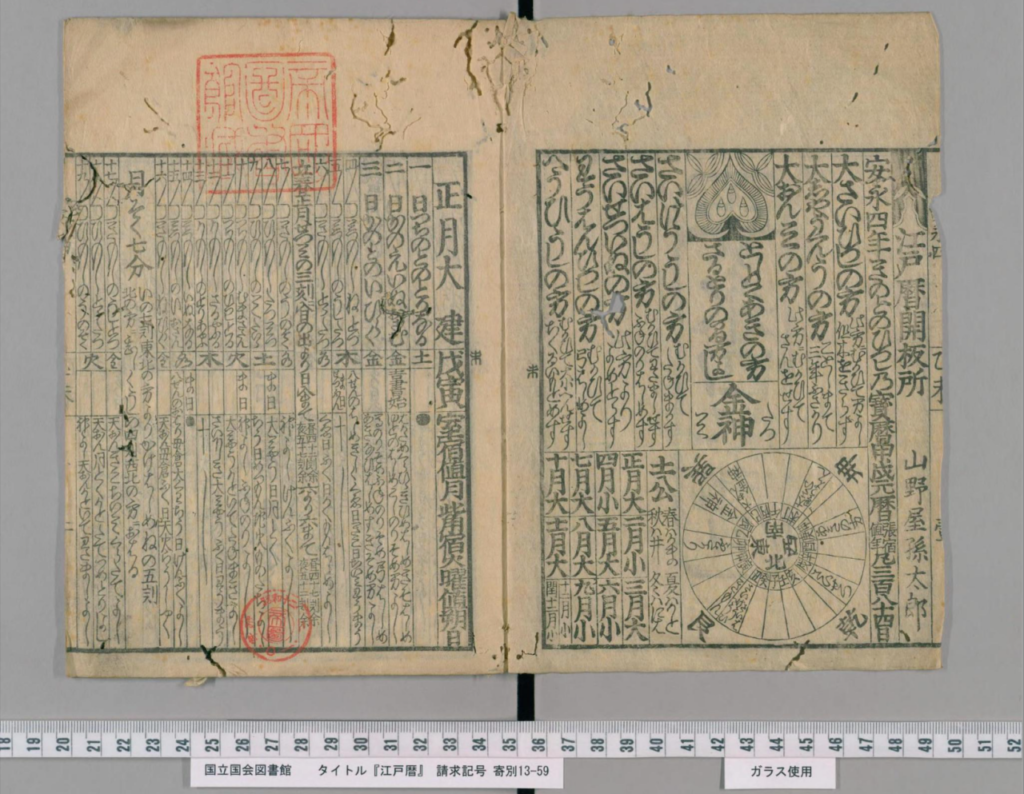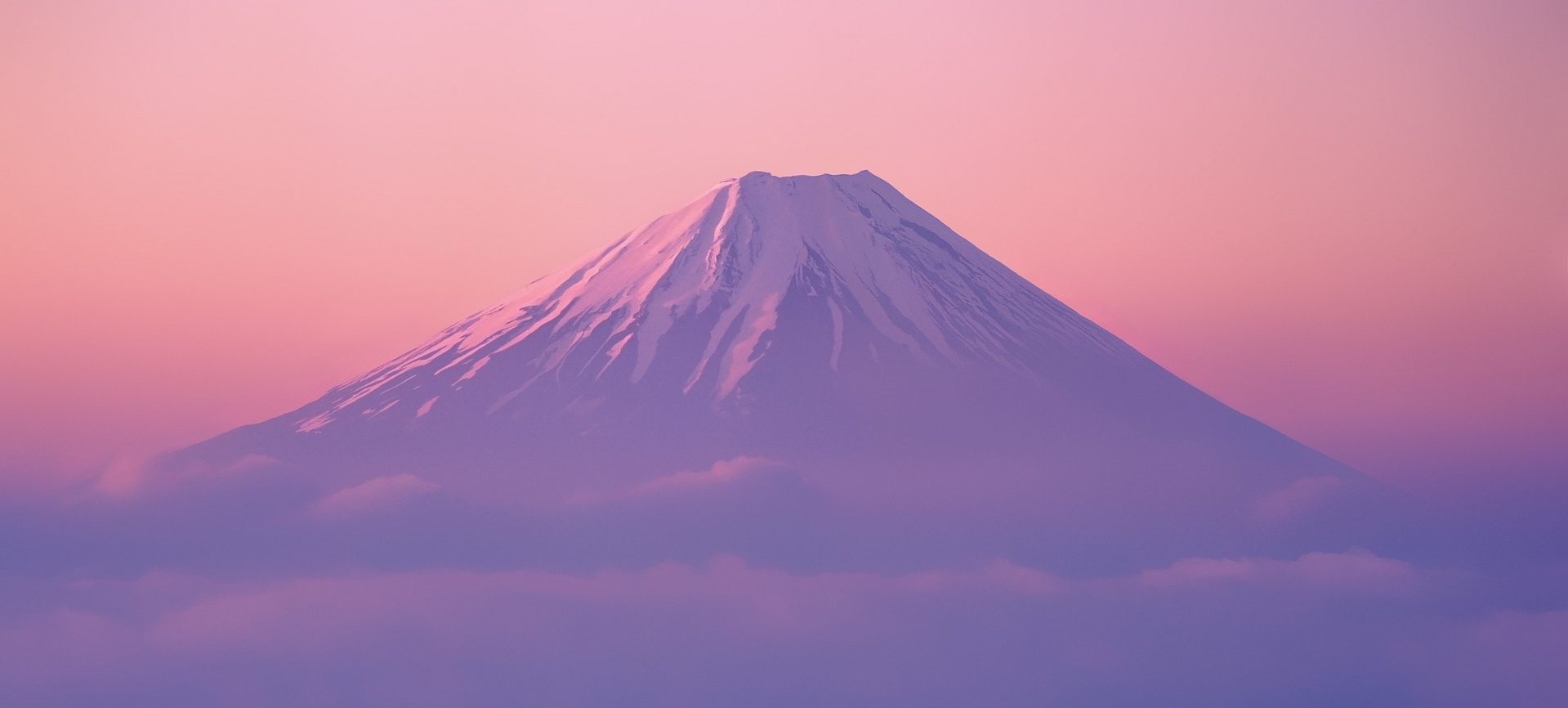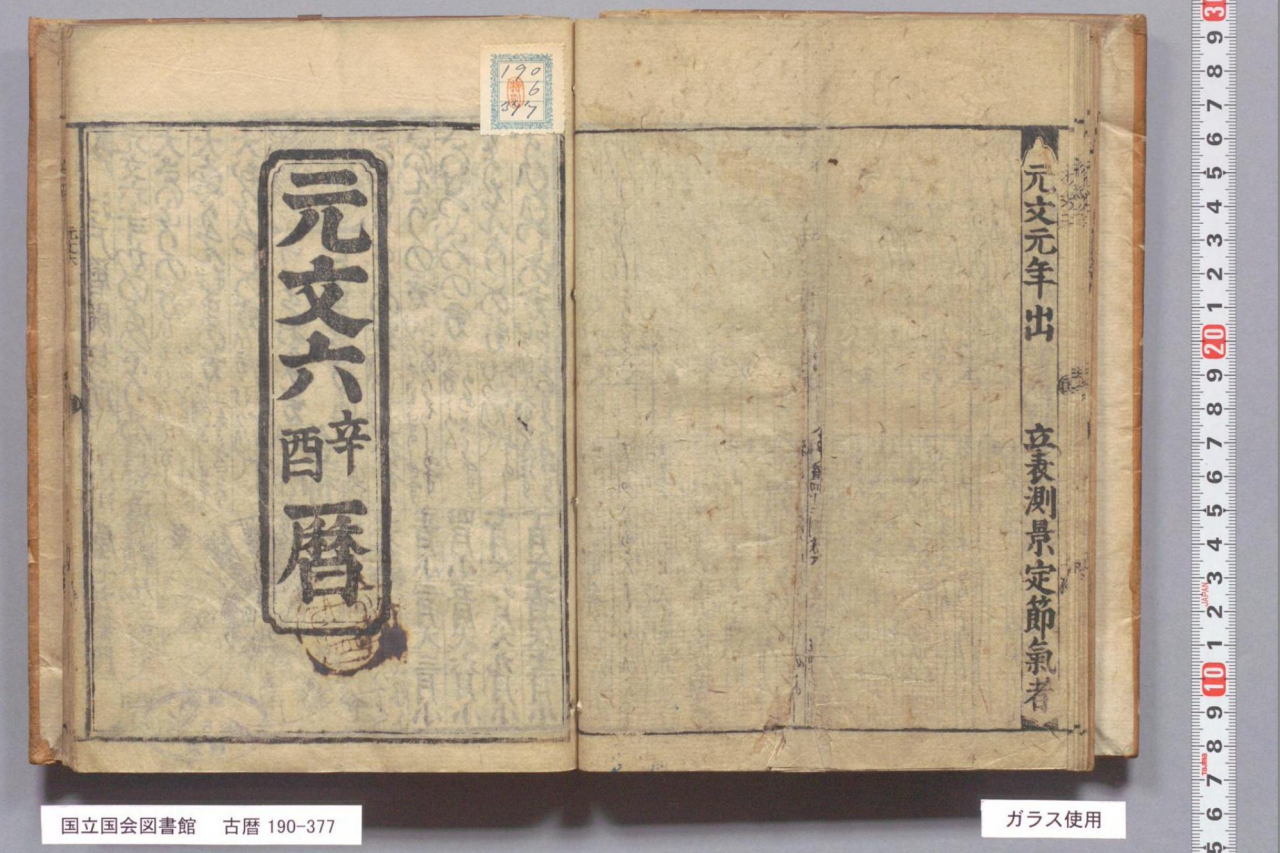ここでは、明治の改暦まで用いられていた太陰太陽暦(天保暦)を旧暦(きゅうれき)、太陰太陽暦(天保暦)も含め、古来から用いられてきた日本の古い暦を古暦(これき)と表しています。
Here, we will introduce the lunisolar calendar (Tenpo calendar), which was used until the Meiji calendar reform, as the old calendar (kyureki 旧暦), and the lunisolar calendar (Tenpo calendar), and the old Japanese calendar that has been used since ancient times as the old calendar (koreki 古暦).
暦の歴史(概略)/History of the calendar (outline)
554年 百済から暦博士来朝
690年 中国から渡来した「太陰太陽暦」を採用(説)
862年 中国から渡来した「長慶宣明暦(ちょうけいせんみょうれき)」(太陰暦)を採用
*元の中国よりも、朝鮮半島で研究・改良された
*わが国では、823年間使用される
1685年 渋川春海(しぶかわはるみ)らが開発した「貞享暦(じょうきょうれき)」(太陰太陽暦)を採用
※日本初、日本製の暦なので「和暦(われき)」とも呼ばれる
554 A calendar expert comes to the Dynasty from Baekje
690 Adopts the “lunisolar calendar” introduced from China
862 Adopts the “Choukei Senmyoreki” (lunar calendar) imported from China
*Researched and improved on the Korean Peninsula rather than the original China
*Used in Japan for 823 years
1685 Adopts the Jokyo Calendar (lunar-solar calendar) developed by Harumi Shibukawa and others
※Since it is Japan’s first calendar made in Japan, it is also called the “Japanese calendar”.
参考サイト
国立公文書館

国立国会図書館「日本の暦」/National Diet Library’s “Japanese Calendar”
より詳しい内容を知りたい方は、国立国会図書館の「日本の暦」サイトをご覧ください。
(ここでは一部を抜粋して引用掲載しています)
For more detailed information, please visit the National Diet Library’s “Japanese Calendar” website.
(Some excerpts are quoted here)
日本最古の歴史書である「日本書紀」の欽明天皇14年(553)6月の条に、百済から「暦博士」を招き、「暦本」を入手しようとした記事がある。これが、日本の記録の中で最初に現れた暦の記事である。
https://www.ndl.go.jp/koyomi/chapter1/s1.html
An entry dated June of the 14th year of Emperor Kinmei (553) in the Nihonshoki, Japan’s oldest chronicle, states that the government planned to invite a calendar expert from Paekche to introduce a calendar to Japan, making it the first reference to a calendar in all Japanese records.
*Paekche 百済
https://www.ndl.go.jp/koyomi/e/history/index.html
太陰太陽暦とは?
当時の暦は、「太陰太陽暦(たいいんたいようれき)」または「太陰暦」、「陰暦」と呼ばれる暦でした。
1ヶ月を天体の月(太陰)が満ち欠けする周期に合わせます。天体の月が地球をまわる周期は約29.5日なので、30日と29日の長さの月を作って調節し、30日の月を「大の月」、29日の月を「小の月」と呼んでいました。一方で、地球が太陽のまわりをまわる周期は約365.25日で、季節はそれによって移り変わります。大小の月の繰り返しでは、しだいに暦と季節が合わなくなってきます。そのため、2~3年に1度は閏月(うるうづき)を設けて13ヶ月ある年を作り、季節と暦を調節しました。大小の月の並び方も毎年替わりました。
暦の制定は、月の配列が変わることのない現在の太陽暦(たいようれき)とは違って非常に重要な意味をもち、朝廷や後の江戸時代には幕府の監督のもとにありました。 太陰太陽暦は、明治時代に太陽暦に改められるまで続きます。
https://www.ndl.go.jp/koyomi/chapter1/s1.html
The calendar used then was called “Tai-in-taiyo-reki,” a lunisolar calendar, or “Onmyo-reki.”
Each month was adjusted to the cycle of moon’s waxing and waning. Since the moon orbits the earth in about 29.5 days, adjustment was required and this was done by making months with either 30 days or 29 days, the former, “Dai-no-tsuki (long month),” the latter, “Sho-no-tsuki (short month).” Aside from the moon’s orbit round the earth, the earth orbits the sun in 365.25 days, which, as we all know, causes the seasonal changes. Thus, merely repeating long and short months gradually produced a discrepancy between the actual season and the calendar. To compensate for this, a month called “Uru-zuki,” or intercalary month, was inserted every few years to produce a year with 13 months, with the order of longer and shorter months changing year by year.
Unlike our contemporary calendar in which there is no change in the order of months, back then the fixing of a calendar was deemed so important that it was placed under the control of the imperial court and, in the later Edo period, under the superimposed military shogunate regime.
https://www.ndl.go.jp/koyomi/e/history/index.html


